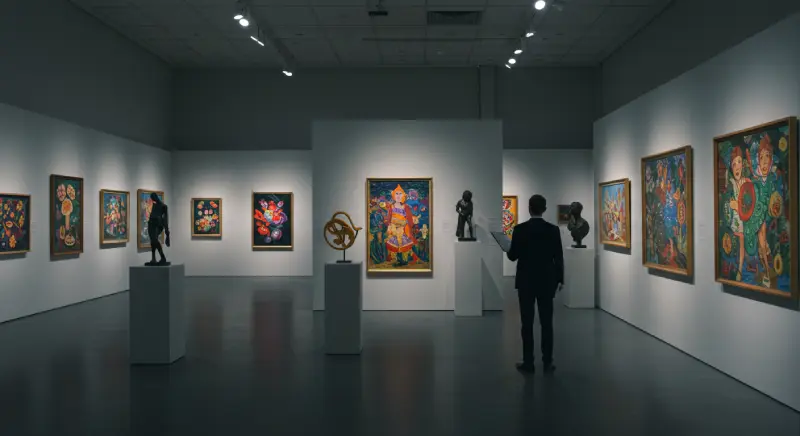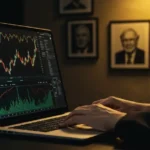Investing in art is often seen as a way to diversify one’s investment portfolio while potentially enjoying both financial returns and aesthetic enjoyment.
While traditional investments like stocks and bonds are popular, art provides an opportunity for non-correlated returns, meaning it doesn’t always follow the same trends as other markets.

1. Types of Art Investments
There are several ways you can invest in art, depending on your financial goals, budget, and personal preferences.
A. Physical Art (Original Paintings, Sculptures, etc.)
Investing in physical works of art is the most traditional form of art investment. This includes:
- Paintings: Famous works by artists like Pablo Picasso, Claude Monet, or contemporary artists.
- Sculptures: Valuable sculptures from well-known artists.
- Drawings & Prints: Works that may not be as costly as paintings but can appreciate over time.
Pros:
- Tangible, physical asset you can display and enjoy.
- Potential for long-term value increase, especially if the artist becomes more famous or if the work becomes rare.
Cons:
- Requires expertise to identify quality art.
- Storage and insurance costs can be significant.
- Art can be illiquid, meaning it may take time to sell for a profit.
B. Art Funds & Fractional Ownership
Art funds allow you to invest in a diversified portfolio of artwork. Rather than buying individual pieces, you can invest in a fund that buys and manages various artworks, providing exposure to a range of works.
Fractional ownership enables investors to buy shares in a particular artwork, meaning they own a portion of the work rather than the whole. This lowers the barrier to entry for investing in high-value art.
Pros:
- Diversified risk through fund management.
- Smaller initial investment for fractional ownership.
Cons:
- Fees associated with the fund or platform.
- You won’t have direct control over the artworks or the ability to display them.
C. Digital Art & NFTs (Non-Fungible Tokens)
A modern twist on art investment involves digital art in the form of NFTs (Non-Fungible Tokens). NFTs are unique digital assets that represent ownership of a specific item, such as digital art, music, and even virtual land. They’re bought and sold through blockchain networks, mainly on platforms like Ethereum.
Pros:
- Access to the rapidly growing digital art market.
- Transparency of ownership and transaction history due to blockchain technology.
Cons:
- Volatility and speculation in the NFT market.
- The risk of platforms or digital files becoming obsolete over time.
2. Research the Art Market
Before diving into the world of art investment, it’s crucial to understand the art market and how its dynamics differ from traditional financial markets. Key factors influencing art value include:
- Artist Reputation: Established artists like Andy Warhol or Banksy may offer higher investment potential compared to emerging artists.
- Rarity and Uniqueness: The more unique the artwork, the higher its potential value. Limited edition prints or works tied to significant cultural moments can appreciate substantially.
- Condition and Provenance: The condition of the artwork and its provenance (history of ownership) significantly impact its value. A piece with a known and prestigious history may fetch a higher price.
- Market Trends: The art market is often influenced by economic conditions, collector tastes, and even trends in the broader cultural landscape.
How to Research Art:
- Auction Results: Major auction houses like Sotheby’s, Christie’s, and Phillips publish auction results and provide insights into the sale prices of specific artists.
- Art Galleries: Visit galleries or online art platforms like Artsy, Saatchi Art, or Artfinder to explore trends and new artists.
- Art Advisors: If you’re new to investing in art, consider hiring an art advisor. These professionals help you navigate the market and acquire art with good investment potential.
3. Set Your Budget and Investment Strategy
Before buying any artwork, decide on your budget and investment strategy. Art can be expensive, so it’s essential to determine how much you’re willing to spend and what type of return you expect.
A. Budgeting for Art Investment
- Entry-Level Art: If you’re just getting started, you might want to focus on emerging artists or prints rather than works by well-known artists.
- Mid-Level Art: Works by established artists who aren’t necessarily household names but have shown consistent growth.
- High-End Art: Consider spending on rare works by iconic artists. These typically require significant financial capital but may offer high returns.
B. Investment Horizon
- Short-Term: If you’re looking for quick returns, art may not be the best option, as it typically takes time for artwork to appreciate.
- Long-Term: If you’re prepared to hold your art for years or even decades, you’ll have a better chance of seeing significant returns, especially in the case of lesser-known artists whose work gains recognition over time.
4. Buy Art from Reputable Sources
The art market is often unregulated, and there’s a risk of encountering counterfeit or misrepresented works. Therefore, it’s essential to buy art from trusted and reputable sources.
A. Art Dealers & Galleries
- Gallery: Established galleries typically showcase works by known artists. They can also provide expert guidance on artwork selection.
- Dealers: Trusted art dealers with a strong reputation can be a great way to find quality art and receive investment advice.
B. Online Platforms
- Artsy: One of the leading online art marketplaces where collectors and investors can buy and sell artworks.
- Saatchi Art: A global online art gallery that allows people to discover and invest in artwork from emerging artists.
- 1stdibs: An online marketplace that offers high-end art, antiques, and collectibles.
C. Auction Houses
Auction houses like Christie’s and Sotheby’s often sell artwork by top-tier artists. You can buy directly at auction or via private sales.
D. Blockchain Platforms (For NFTs)
If you’re looking into digital art, platforms like OpenSea, Rarible, or SuperRare are popular places to purchase NFT art.
5. Understand How to Store and Maintain Your Art Investment
Once you’ve purchased your art, proper storage and maintenance are essential for preserving its value.
- Climate Control: Store paintings and sculptures in a controlled environment with consistent temperature and humidity to prevent damage.
- Insurance: Art insurance is crucial to protect your investment from theft, fire, or natural disasters. Some specialized insurers offer policies tailored to art investors.
- Framing and Display: Displaying art properly can also impact its value. Ensure it’s framed with high-quality materials and displayed in a way that enhances its value.
6. Selling and Exiting Your Art Investment
When it’s time to sell your art, you can do so through several channels:
- Auction Houses: Sotheby’s and Christie’s are two of the most prestigious auction houses that can help you sell valuable art.
- Art Dealers/Galleries: Trusted art dealers may help you sell your artwork privately or through exhibitions.
- Online Platforms: Websites like Artsy and Saatchi Art allow you to list your art for sale to a global audience.
When selling, it’s important to:
- Assess Current Market Trends: Understand the demand for your artwork before selling.
- Consider Tax Implications: Art is considered a collectible, and selling it may have tax consequences, such as capital gains tax.
7. Risks of Investing in Art
While art can be a lucrative investment, there are several risks to consider:
- Liquidity: Art can be a illiquid asset. It may take time to find a buyer, and prices can fluctuate.
- Market Volatility: The art market can be influenced by trends, which may result in short-term price fluctuations.
- Forgeries and Provenance Issues: Authenticity and ownership history are crucial to an artwork’s value. Be cautious when buying art from less-established sources.
Conclusion: How to Invest in Art
Investing in art can be a rewarding way to diversify your portfolio and potentially generate long-term returns. However, it requires research, patience, and an understanding of both the market and the specific pieces you’re investing in.
Here’s a summary of key steps:
- Choose Your Investment Type: Decide between physical art, art funds, NFTs, or fractional ownership.
- Research: Understand the art market and trends by reviewing auction results, art galleries, and art advisors.
- Set a Budget: Determine how much you are willing to invest and your expected time horizon.
- Buy from Reputable Sources: Purchase from galleries, dealers, and platforms with strong reputations.
- Maintain Your Art: Properly store, insure, and care for your art to preserve its value.
- Sell When the Time Is Right: Use auction houses or dealers when you’re ready to sell.
By following these steps and taking a long-term approach, you can enjoy the rewards of art investment, both financially and personally.



